Houseplants are normally grown in a nutrient containing "growing media" or "growing medium" which can be compost or soil, although it's often a peat or peat-free mix.
You can normally use these products straight from the bag and get great results, so why write an extensive article about the topic? Well a lot of indoor gardeners like to have some control over the "mixes" that they use, especially because not all houseplants like the same thing.
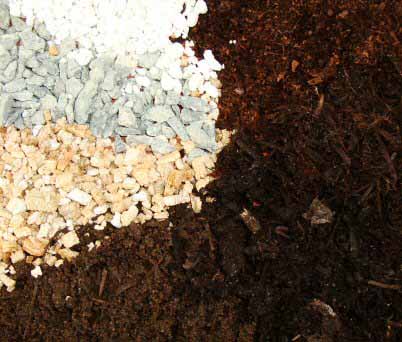
Houseplants will grow in a wide range of different products.
Others take enjoyment from creating their own "blends" from scratch so want to learn about what they can use or you may just want to get to grips with the difference between Perlite and Vermiculite. Either way, your houseplants will only be as healthy as their roots so it's important to understand and encourage good root health and this starts with understanding the materials that surround and support them.
Most houseplants will often be quiet happy in several different growing mediums types, so there is usually not one magic type for every plant.
As a general rule all houseplants need a growing medium that is sufficiently "open" and "loose" enough to allow its roots to grow through quite easily, but not so open that the plant is unable to remain anchored in the pot.
As a general rule all houseplants need a growing medium that is sufficiently "open" and "loose" enough to allow its roots to grow
It needs to be open and loose enough that water can flow through the soil but not so open that water literally just runs out the bottom otherwise your plant will have nothing to drink. It also can't be too "closed" otherwise the plant will become waterlogged which will cause the roots to rot.
If a growing medium can hold water and also allow air into it, then it can support microorganisms and also hold nutrients which are essential for plant health and growth. A good indoor potting mix will allow the above to happen.
Generally speaking, most people will use 100% Peat, Peat-free or Home Made Compost for their houseplants. However there are other commonly used materials that can also be added to make the ideal potting mix.
The use of Peat has become increasingly controversial in many countries in recent years. It's a truly exceptional growing medium for almost all houseplants, providing ideal moisture and nutrient retention and is quite slow to break down.
It's cheap and readily available in the majority of supermarkets and garden center's, it's also the most likely soil mix you will find in the pots of your recently brought plants.

Peat is a good material for growing houseplants, but it's use is bad for the environment, and harvesting it destroys ecosystems.
Peat is an all rounder and generally excellent for all houseplants. So what's the problem?
The issue is that Peat comes from naturally forming peat-lands which are the most effective soil carbon sinks in the world. Harvesting these peat-lands destroys the surrounding environments and allows more C02 to exist in the atmosphere and ultimately influences climate change.
It takes too long to form to be classed as truly renewable, so basically it's not sustainable because realistically we can't replace what we use.
However, we still have to consider that Peat is a fantastic growing medium and will aid houseplant growth, which in turn results in photosynthesis and arguably creates a better natural cycle than those who burn peat as an energy source.
It's obviously still not brilliant however, which is why our personal view is that it's a better idea to use Peat free, or at least peat reduced products wherever possible.
The rest of this article features growing mediums which can be added to 100% peat products to "dilute" and make the peat go further. So rather than only being able to repot 5 houseplants with one bag of peat, if you mix it with other effective ingredients you might be able to repot 20 houseplants and still get equally good results.
Usually Peat can be used right out of the bag with nothing extra needed. It often comes with nutrients already added and can feed a slow growing houseplant for several months up to a year (depending on how quickly it grows).
If you've read the previous section you will know we will recommend thinking about adding other materials to make your peat purchase go further.
Peat-free potting composts will contain mixtures of organic materials such as coir, green compost, shredded bark and then mixed with inorganic materials such as sharp sand and rock wool.
This mix of coarse and fine particles is needed in order to form a compost that can hold water and nutrients but also allow air into the mix. All of this is essential for root growth.
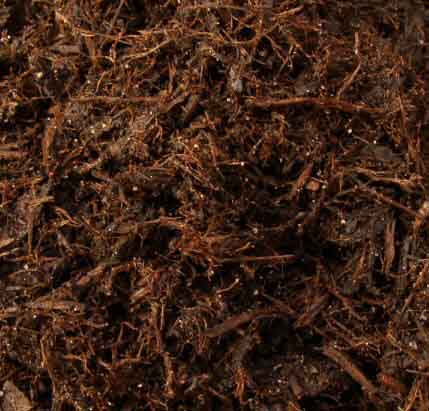
The peat-free products you can buy today, can be better than 100% peat products.
Peat-free products are becoming increasing popular, however as it's quite a new market there is not one main competitor or perfect "product". This means some perform better than others and there are lots of different materials that could be in your peat-free bag.
If you can, get access to what's inside the bag and have a feel as for indoor plants you're looking for something which should be quite fine and smell reasonably pleasant.
If you've chosen an unknown Peat-free compost you may want to experiment a little to check its suitability. Some mixes can be very bulky and have large components which make them harder to work with and less helpful to houseplants which may have small roots and pots. All being well however, just like a 100% peat mix, you should be able to use this straight out of the bag.
Combine it with other growing mediums if desired otherwise you should be pretty much good to go as soon as you open the pack.
You should not use Peat-free products with carnivorous house plants such as the Venus Fly Trap and Sarracenia because they originate from peat bogs and therefore do best growing in Peat.
Home made compost is very easy to make, fantastic for the environment and often free (or low cost).

If you have a large enough garden or yard you can easily make your own compost from your household scraps.
You'll need a composter to get started and a space in your garden to put it. It also needs to be sitting on soil so worms and other beneficial organisms can actually gain access to the material inside.
Then it's just a case of adding green and brown waste and turning the "ingredients" every so often. After several months your waste will have been transformed into a compost which is a nectar of nutrient-rich humus.
Well rotted home made compost can often be used to substitute a bag of 100% peat, and can be used in the same way a peat-free mix you buy from a store (in fact sometimes compost is what you're actually buying when it's labeled "peat-free" anyway!).
You need to be make sure with home made compost that it's completely decomposed and has not taken on too much of the nature of the surrounding soil. If your composter is situated on top of clay soil for example the resulting compost will have elements of clay, fantastic for outdoor plants but possibly too heavy for indoor ones.

Hi, I'm Tom!
If you're like me and enjoy the challenge of growing houseplants and getting them to thrive, then Ourhouseplants can help. This website shares my knowledge and years of growing plants and provides (hopefully) helpful advice on properly caring for your indoor plant friends.
A lot of people tell us they use "dirt" scooped up from the yard or garden for their indoor plants. In some cases this is wonderful stuff, but often when someone says "dirt" they are talking about the stuff that sits on the surface of their soil. Exposed and weathered to the elements this makes it actually very poor quality, lacking in nutrients and any real ability to hold water.
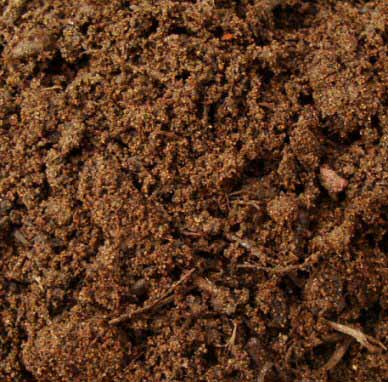
Only small amounts of Topsoil should be used in pots.
True topsoil sits just below this surface level and can be 8inches / 20cm deep and in ideal situations it's the perfect growing area for the roots of outdoor plants. It has the highest concentration of organic matter and microorganisms and is where most of the Earth's biological soil activity occurs. This stuff is the business.
Topsoil whilst bursting with life, and nutrients is not suitable as a sole ingredient in your growing medium for indoor plants. Not only is it expensive, it's incredibly heavy when compared to peat or peat-free products which makes it very difficult for plants in containers as their roots struggle to grow through it.
Topsoil is heavy because its components are very small and thus compact easily meaning there is no air for the roots to breathe, this also means it holds water well, but by itself, too well.
So to utilise the fantastic elements of topsoil you should mix it with other materials to keep it "open". It's common to combine it with peat or peat-free products, the total quantity of topsoil in an indoor potting mix should usually be anywhere between 0% - 30%.
Well rotten horse or farmyard manure is a fantastic way to improve or add to a chosen growing medium. It holds water well and adds a large number of different nutrients.
In most cases a pot containing only manure is too rich for almost all houseplants, the only exceptions being very heavy feeders such as the Banana. So it's far better to mix it with some other growing mediums mentioned in this article.
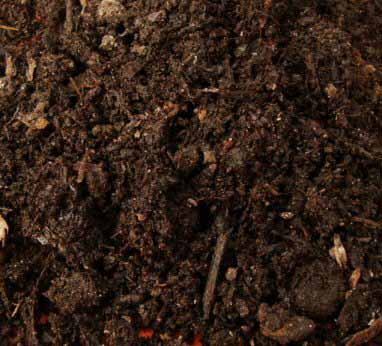
Manure can be used on houseplants. Just in small amounts.
No matter how much you decide to use, it's imperative you use well rotten manure - the fresh stuff is absolutely bursting with biological activity which is basically burning itself out. The heat and strong biological activity will damage or even destroy roots. Plus it stinks.
So how do you know if its "well rotted"? That's easy to answer, what you're looking for, or rather smelling for, is a light earthy and perhaps sweet scent. It shouldn't smell foul or feel like mush. Basically if you're not comfortable holding it in your bare hands - it's not ready.
You should not use manure in an overly high quantity when it comes to houseplants as it is often too rich and holds water too well, which in turn will encourage overwatering and rotting.
A mix containing 40% at the absolute most, and even then only for gross feeders, such as The Swiss Cheese Plant. You can use a small amount of manure in the potting mix (10%) for most houseplants excluding those which thrive in nutrient poor soil such as the Venus Fly Trap and most cacti.
Sphagnum is often called Peat Moss and although it is linked to dried "Peat" it does not have the associated controversy because it is fairly renewable and Sphagnum is often used in its live form.
It may be best for the novice indoor gardener to give it a miss as Sphagnum is alive and thus needs care itself in order to survive and continue supporting the houseplant growing in it.
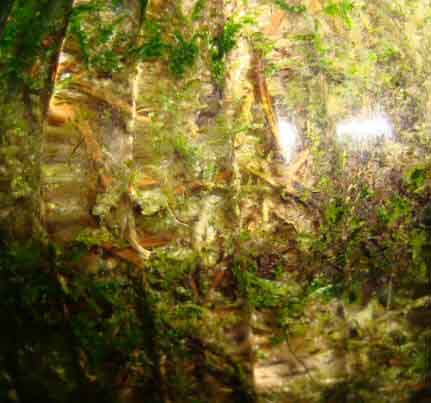
Living Sphagnum Moss supporting a houseplant, but it also needs support itself.
Both living and spent cells of Sphagnum Moss can hold large quantities of water inside their cells - up to 25 times as much water as their dry weight! This makes it a great soil-less material for certain houseplants.
You can't "blend" it with peat or compost if you want to keep it alive, but you can sit it on the top surface of the growing medium to create an attractive appearance and aid in water retention.
It's commonly used to grow houseplants which have large thick roots that are happy to be exposed to light such as those of the Moth Orchid, although you may also find it supporting various succulents like the House Leek.
White Perlite stays white. No matter how long it stays in the muck it keeps that bright appearance, which can add some decorative appeal to your soil mixes. But it also has a much more practical application.
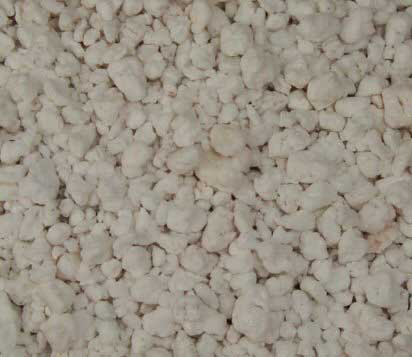
Perlite improves drainage but also holds some water
In its natural form it's quite dense almost like a tiny stone, however once heated it expands and although at first glance you may think it's heavy it's actually really lightweight.
The closest way to describe it is to think Polystyrene / Styrofoam (which is actually utterly horrible stuff, but that's another story), Perlite, although a non renewable resource is still very much abundant and in terms of gardening only small quantities are ever used.
Perlite is a light weight product that does retain some water and keeps the growing medium "open". In general you use only small amounts in a soil mix as too much will make it very free draining and nutrient poor.
Naturally that type of effect has it's place, perhaps for young seedlings or house plant cuttings where too much moisture saturation would cause rotting.
You can also use Vermiculite (see below) as a similar comparable product, although Vermiculite as a general rule will hold more water.
Vermiculite is used in many different ways, from house insulation to fireproofing, and as you might expect it can also be used by indoor gardeners.
It's somewhat free draining, however Vermiculite also holds several times it's own weight in water which makes it ideal in potting mixes. Just like Perlite it's very light weight and reasonably cheap, although you should always use freshly brought, rather than trying to utilise the old stuff from your attic!
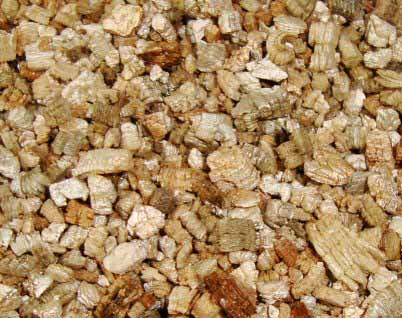
Vermiculite can also be used in potting mixes.
Vermiculite is very like Perlite in that it will help to keep your growing mediums "open", it's more discrete than it's rival's bright white appearance, however it tends to hold more water because of its sponge like absorbent nature.
If you have the choice, use Vermiculite over Perlite when you have houseplants which need a lot of watering. You can use 100% Vermiculite (or Perlite) for cuttings but it's normal to reduce this drastically when the plant is up and growing (0% - 20%) because it does not hold nutrients well and without these your plant will suffer.
Gravel and Grit come in many colors, shapes and sizes, although you need to make sure you are using horticultural gravel or grit. Anything else will not be designed for potting mixes and could be contaminated with chemicals or simply have pieces which are too large.
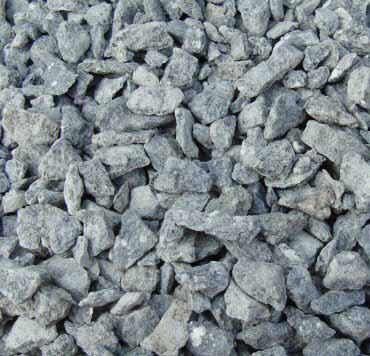
Horticultural Grit can help keep your potting mix free draining.
Prices can vary greatly but typically you won't be using a great deal so a little will go a long way.
Unlike Vermiculite and Perlite, Gravel and Grit will hold no water at all, although it will still keep your potting mix "open" and free draining. It can also add weight to containers for top heavy plants in order to stop them toppling over. Applying a layer to the surface will also aid in water retention and stop the rest of your growing medium from drying out as quickly.
A composition featuring a reasonable amount of grit is great for houseplants which dislike over watering such as cacti, but for typical houseplants it should only make up a small quantity of the actual mix, ideally less than 5%.
If your primary purpose for using it is to add weight, consider adding a layer at the very bottom of the pot or at the soil surface rather than where the roots will be growing.
There are lots of other organic and inorganic materials that can be added to potting mixes to improve drainage or improve the consistency of the end result.
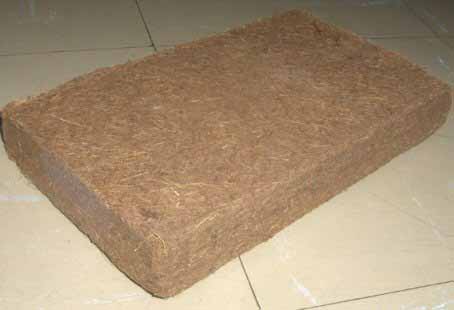
Coconut Coir brick - Photo by MatiasMiika
If people continue to move away from peat based products, alternatives will likely increase over time. Sharp Sand and Coconut Coir are two somewhat common substances which are used currently, both may already be present in the Peat-free products sold in your local shops, but you can of course actively add these to your own mixes.
Sharp Sand improves drainage as the tiny grains are not capable of holding water and they prevent the other material from clumping together and compacting. Like Topsoil however this is heavy stuff and is not a good material to have in a great quantity, even cacti would struggle to thrive in a high concentration of Sharp Sand.
Coconut Coir is a natural fibre extracted from the husk of coconut which has excellent water retention properties while also maintaining structure and allowing air to circulate. It comes in two forms, roughly shredded or fine.
The shredded version is good for combining with Peat, and compost etc, where as the fine version can sometimes be used as a complete Peat-free alternative by itself. You can of course combine it with many other materials, including those discussed above.